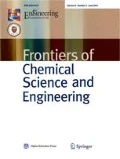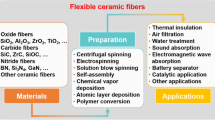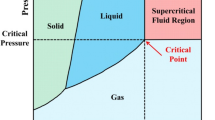Abstract
A facile strategy was developed to fabricate flexible polyurethane (PU) foam composites with exceptional flame retardancy. The approach involves the incorporation of graphene oxide (GO) into a silicone resin (SiR) solution, which is then deposited onto a PU foam surface via the dip-coating technique and cured. Fourier-transform infrared spectroscopy, scanning electron microscopy, and Raman spectroscopy measurements demonstrated that the SiR and GO were successfully coated onto the PU skeleton and the intrinsic porous structure of the PU foam remained intact. The effects of SiR and GO on the mechanical and thermal stability and flame retardancy of PU composites were evaluated through compression tests, thermogravimetric analysis, vertical combustion tests, and the limiting oxygen index. The measurement results revealed that the composites (PU@SiR-GO) showed superior flame retardancy and thermal and mechanical stability compared to pristine PU or PU coated with SiR alone. The mechanical and thermal stability and the flame-retardant properties of the PU composites were enhanced significantly with increasing GO content. Based on the composition, microstructure, and surface morphology of PU@SiR-GO composites before and after combustion tests, a possible flameretardance mechanism is proposed. This work provides a simple and effective strategy for fabricating flame-retardant composites with improved mechanical performance.

Similar content being viewed by others
References
Lefebvre J, Bastin B, Le Bras M, Duquesne S, Paleja R, Delobel R. Thermal stability and fire properties of conventional flexible polyurethane foam formulations. Polymer Degradation & Stability, 2005, 88(1): 28–34
Song K, Zhang Y, Meng J, Green E C, Tajaddod N, Li H, Minus M L. Structural polymer-based carbon nanotube composite fibers: understanding the processing-structure-performance relationship. Materials (Basel), 2013, 6(6): 2543–2577
Zia K M, Bhatti H N, Ahmad Bhatti I. Methods for polyurethane and polyurethane composites, recycling and recovery: a review. Reactive & Functional Polymers, 2007, 67(8): 675–692
Tian H, Yao Y, Zhang S, Wang Y, Xiang A. Enhanced thermal stability and flame resistance of rigid polyurethane-imide foams by varying copolymer composition. Polymer Testing, 2018, 67: 68–74
Haile M, Fomete S, Lopez I D, Grunlan J C. Aluminum hydroxide multilayer assembly capable of extinguishing flame on polyurethane foam. Journal of Materials Science, 2016, 51(1): 375–381
Denecker C, Liggat J, Snape C. Relationship between the thermal degradation chemistry and flammability of commercial flexible polyurethane foams. Journal of Applied Polymer Science, 2006, 100(4): 3024–3033
Wang C Q, Ge F Y, Sun J, Cai Z S. Effects of expandable graphite and dimethyl methylphosphonate on mechanical, thermal, and flame-retardant properties of flexible polyurethane foams. Journal of Applied Polymer Science, 2013, 130(2): 916–926
Bourbigot S, Duquesne S. Fire retardant polymers: recent developments and opportunities. Journal of Materials Chemistry, 2007, 17(22): 2283–2300
Cain A A, Nolen C R, Li Y C, Davis R, Grunlan J C. Phosphorous-filled nanobrick wall multilayer thin film eliminates polyurethane melt dripping and reduces heat release associated with fire. Polymer Degradation & Stability, 2013, 98(12): 2645–2652
Zhang M, Zhang J, Chen S, Zhou Y, Luo Z. Effects of a novel phosphorus-nitrogen flame retardant on rosin-based rigid polyurethane foams. Polymer Degradation & Stability, 2015, 120: 427–434
Yang R, Hu W, Xu L, Song Y, Li J. Synthesis, mechanical properties and fire behaviors of rigid polyurethane foam with a reactive flame retardant containing phosphazene and phosphate. Polymer Degradation & Stability, 2015, 122: 102–109
Zhang L, Wang F, Zhang X, Zou J J. Synthesis of aluminum nanoparticles as additive to enhance ignition and combustion of high energy density fuels. Frontiers of Chemical Science and Engineering, 2018, 12(3): 358–366
Yang H, Wang X, Song L, Yu B, Yuan Y, Hu Y, Yuen R K K. Aluminum hypophosphite in combination with expandable graphite as a novel flame retardant system for rigid polyurethane foams. Polymers for Advanced Technologies, 2014, 25(9): 1034–1043
Wang X, Zhang P, Huang Z, Xing W, Song L, Hu Y. Effect of aluminum diethylphosphinate on the thermal stability and flame retardancy of flexible polyurethane foams. Fire Safety Journal, 2019, 106: 72–79
Bourbigot S, Bras M L, Leeuwendal R, Shen K K, Schubert D. Recent advances in the use of zinc borates in flame retardancy of eva. Polymer Degradation & Stability, 1999, 64(3): 419–425
Gao Y, Wu J, Wang Q, Wilkie C, O’Hare D. Flame retardant polymer/layered double hydroxide nanocomposites. Journal of Materials Chemistry. A, Materials for Energy and Sustainability, 2014, 2(29): 10996–11016
Wu Q, Gong L, Li Y, Cao C, Tang L, Wu L, Zhao L, Zhang G, Li S, Gao J, Li Y, Mai Y W. Efficient flame detection and early warning sensors on combustible materials using hierarchical graphene oxide/silicone coatings. ACS Nano, 2018, 12(1): 416–424
Liu C, Fang Y, Miao X, Pei Y, Yan Y, Xiao W, Wu L. Facile fabrication of superhydrophobic polyurethane sponge towards oil-water separation with exceptional flame-retardant performance. Separation and Purification Technology, 2019, 229: 115801
Li Y, Kim Y S, Shields J, Davis R. Controlling polyurethane foam flammability and mechanical behaviour by tailoring the composition of clay-based multilayer nanocoatings. Journal of Materials Chemistry. A, Materials for Energy and Sustainability, 2013, 1(41): 12987–12997
Wang W, Pan Y, Pan H, Yang W, Liew K M, Song L, Hu Y. Synthesis and characterization of MnO2 nanosheets based multilayer coating and applications as a flame retardant for flexible polyurethane foam. Composites Science and Technology, 2016, 123: 212–221
Pan H, Shen Q, Zhang Z, Yu B, Lu Y. MoS2-filled coating on flexible polyurethane foam via layer-by-layer assembly technique: flame-retardant and smoke suppression properties. Journal of Materials Science, 2018, 53(12): 9340–9349
Cain A A, Plummer M G B, Murray S E, Bolling L, Regev O, Grunlan J C. Iron-containing, high aspect ratio clay as nanoarmor that imparts substantial thermal/flame protection to polyurethane with a single electrostatically-deposited bilayer. Journal of Materials Chemistry. A, Materials for Energy and Sustainability, 2014, 2(41): 17609–17617
Kim Y S, Harris R, Davis R. Innovative approach to rapid growth of highly clay-filled coatings on porous polyurethane foam. ACS Macro Letters, 2012, 1(7): 820–824
Cho J H, Vasagar V, Shanmuganathan K, Jones A R, Nazarenko S, Ellison C J. Bioinspired catecholic flame retardant nanocoating for flexible polyurethane foams. Chemistry of Materials, 2015, 27(19): 6784–6790
Laufer G, Kirkland C B, Morgan A, Grunlan J. Exceptionally flame retardant sulfur-based multilayer nanocoating for polyurethane prepared from aqueous polyelectrolyte solutions. ACS Macro Letters, 2013, 2(5): 361–365
Mu X, Yuan B, Pan Y, Feng X, Duan L, Zong R, Hu Y. A single α-cobalt hydroxide/sodium alginate bilayer layer-by-layer assembly for conferring flame retardancy to flexible polyurethane foams. Materials Chemistry and Physics, 2017, 191: 52–61
Pan Y, Liu L, Cai W, Hu Y, Jiang S, Zhao H. Effect of layer-by-layer self-assembled sepiolite-based nanocoating on flame retardant and smoke suppressant properties of flexible polyurethane foam. Applied Clay Science, 2019, 168: 230–236
Wang W, Pan H, Yu B, Pan Y, Song L, Liew K M, Hu Y. Fabrication of carbon black coated flexible polyurethane foam for significantly improved fire safety. RSC Advances, 2015, 5(69): 55870–55878
Carosio F, Fina A. Three organic/inorganic nanolayers on flexible foam allow retaining superior flame retardancy performance upon mechanical compression cycles. Frontiers in Materials, 2019, 6: 20
Holder K M, Cain A A, Plummer M G, Stevens B E, Odenborg P K, Morgan A B, Grunlan J C. Carbon nanotube multilayer nanocoatings prevent flame spread on flexible polyurethane foam. Macromolecular Materials and Engineering, 2016, 301(6): 665–673
Zhang X, Shen Q, Zhang X, Pan H, Lu Y. Graphene oxide-filled multilayer coating to improve flame-retardant and smoke suppression properties of flexible polyurethane foam. Journal of Materials Science, 2016, 51(23): 10361–10374
Wu Q, Zhang Q, Zhao L, Li S, Wu L, Jiang J, Tang L. A novel and facile strategy for highly flame retardant polymer foam composite materials: transforming silicone resin coating into silica self-extinguishing layer. Journal of Hazardous Materials, 2017, 336: 222–231
Xie H, Yang W, Yuen A C Y, Xie C, Xie J, Lu H, Yeoh G H. Study on flame retarded flexible polyurethane foam/alumina aerogel composites with improved fire safety. Chemical Engineering Journal, 2017, 311: 310–317
Kim Y S, Davis R, Cain A A, Grunlan J C. Development of layer-by-layer assembled carbon nanofiber-filled coatings to reduce polyurethane foam flammability. Polymer, 2011, 52(13): 2847–2855
Chen P, Zhao Y, Wang W, Zhang T, Song S. Correlation of montmorillonite sheet thickness and flame retardant behavior of a chitosan-montmorillonite nanosheet membrane assembled on flexible polyurethane foam. Polymers, 2019, 11(2): 213
Hai Y, Wang C, Jiang S, Liu X. Layer-by-layer assembly of aerogel and alginate toward self-extinguishing flexible polyurethane foam. Industrial & Engineering Chemistry Research, 2020, 59(1): 475–483
Lin B, Yuen A C Y, Li A, Zhang Y, Chen T B Y, Yu B, Lee E W M, Peng S, Yang W, Lu H, Chan Q N, Yeoh G H, Wang C H. Mxene/chitosan nanocoating for flexible polyurethane foam towards remarkable fire hazards reductions. Journal of Hazardous Materials, 2020, 381: 120952
Pan H, Pan Y, Wang W, Song L, Hu Y, Liew KM. Synergistic effect of layer-by-layer assembled thin films based on clay and carbon nanotubes to reduce the flammability of flexible polyurethane foam. Industrial & Engineering Chemistry Research, 2014, 53(37): 14315–14321
Ji X, Xu Y, Zhang W, Cui L, Liu J. Review of functionalization, structure and properties of graphene/polymer composite fibers. Composites. Part A, Applied Science and Manufacturing, 2016, 87: 29–45
Nine M J, Cole M A, Tran D N H, Losic D. Graphene: a multipurpose material for protective coatings. Journal of Materials Chemistry. A, Materials for Energy and Sustainability, 2015, 3(24): 12580–12602
Maddalena L, Carosio F, Gomez J, Saracco G, Fina A. Layer-by-layer assembly of efficient flame retardant coatings based on high aspect ratio graphene oxide and chitosan capable of preventing ignition of PU foam. Polymer Degradation & Stability, 2018, 152: 1–9
Li Y, Mannen S, Schulz J, Grunlan J C. Growth and fire protection behavior of poss-based multilayer thin films. Journal of Materials Chemistry, 2011, 21(9): 3060–3069
Yang Z, Han S, Zhang R, Feng S, Zhang C, Zhang S. Effects of silphenylene units on the thermal stability of silicone resins. Polymer Degradation & Stability, 2011, 96(12): 2145–2151
Zhou W, Yang H, Guo X, Lu J. Thermal degradation behaviors of some branched and linear polysiloxanes. Polymer Degradation & Stability, 2006, 91(7): 1471–1475
Hamdani S, Longuet C, Perrin D, Lopez-cuesta J, Ganachaud F. Flame retardancy of silicone-based materials. Polymer Degradation & Stability, 2009, 94(4): 465–495
Jia P, Liu H, Liu Q, Cai X. Thermal degradation mechanism and flame retardancy of MQ silicone/epoxy resin composites. Polymer Degradation & Stability, 2016, 134: 144–150
Hummers W S Jr, Offeman R E. Preparation of graphitic oxide. Journal of the American Chemical Society, 1958, 80(6): 1339–1339
Davis R, Li Y, Kim Y S R, Shields J. Controlling foam flammability and mechanical behavior by tailoring the composition of clay-based multilayer nanocoatings. Advanced Functional Materials, 2013, 41(1): 12987–12997
Wan Y, Tang L, Gong L, Yan D, Li Y, Wu L, Jiang J, Lai G. Grafting of epoxy chains onto graphene oxide for epoxy composites with improved mechanical and thermal properties. Carbon, 2014, 69(2): 467–480
Pan H, Yu B, Wang W, Pan Y, Song L, Hu Y. Comparative study of layer by layer assembled multilayer films based on graphene oxide and reduced graphene oxide on flexible polyurethane foam: flame retardant and smoke suppression properties. RSC Advances, 2016, 6(115): 114304–114312
Patel M, Swain A C. Thermal stability of poly(m-carborane-siloxane) elastomers. Polymer Degradation & Stability, 2004, 83(3): 539–545
Jovanovic J D, Govedarica M N, Dvornic P R, Popovic I G. The thermogravimetric analysis of some polysiloxanes. Polymer Degradation & Stability, 1998, 61(1): 87–93
Wang X, Dou W. Preparation of graphite oxide (GO) and the thermal stability of silicone rubber/GO nanocomposites. Thermochimica Acta, 2012, 529: 25–28
Ma W, Li J, Zhao X. Improving the thermal and mechanical properties of silicone polymer by incorporating functionalized graphene oxide. Journal of Materials Science, 2013, 48(15): 5287–5294
Wang X, Kalali E N, Wan J, Wang D. Carbon-family materials for flame retardant polymeric materials. Progress in Polymer Science, 2017, 69: 22–46
Deng Y, Qi D, Deng C, Zhang X, Zhao D. Superparamagnetic high-magnetization microspheres with an Fe3O4@SiO2 core and perpendicularly aligned mesoporous SiO2 shell for removal of microcystins. Journal of the American Chemical Society, 2008, 130(1): 28–29
Gong L X, Pei Y B, Han Q Y, Zhao L, Wu L B, Jiang J X, Tang L C. Polymer grafted reduced graphene oxide sheets for improving stress transfer in polymer composites. Composites Science and Technology, 2016, 134: 144–152
Shi Y, Li L J. Chemically modified graphene: flame retardant or fuel for combustion?. Journal of Materials Chemistry, 2011, 21(10): 3277–3279
Higginbotham A L, Lomeda J R, Morgan A B, Tour J M. Graphite oxide flame-retardant polymer nanocomposites. ACS Applied Materials & Interfaces, 2009, 1(10): 2256–2261
Acknowledgements
This work was supported by the National Key Research and Development Program (Grant No. 2017YFB0307700), and the Department of Scientific and Technology of Zhejiang Province (LGG18E030007, LGG19E030007), and the Project for the Innovation of High Level Returned Overseas Scholars (or team) in Hangzhou. We also acknowledge the support from Collaborative Innovation Center of Zhejiang Province for the Manufacture of Fluorine and Silicone Fine Chemicals and Materials (FSi2018A028, FSi2018B004), and professional development project for domestic visiting scholars in universities (FX2017054).
Author information
Authors and Affiliations
Corresponding authors
Supplementary Materials
Supplementary material, approximately 5.22 MB.
Supplementary material, approximately 5.71 MB.
Supplementary material, approximately 14.9 MB.
Supplementary material, approximately 7.81 MB.
Supplementary material, approximately 4.69 MB.
11705_2020_1988_MOESM6_ESM.pdf
Exceptionally flame-retardant flexible polyurethane foam composites: synergistic effect of the silicone resin/graphene oxide coating
Rights and permissions
About this article
Cite this article
Wu, Q., Zhang, J., Wang, S. et al. Exceptionally flame-retardant flexible polyurethane foam composites: synergistic effect of the silicone resin/graphene oxide coating. Front. Chem. Sci. Eng. 15, 969–983 (2021). https://doi.org/10.1007/s11705-020-1988-8
Received:
Accepted:
Published:
Issue Date:
DOI: https://doi.org/10.1007/s11705-020-1988-8




